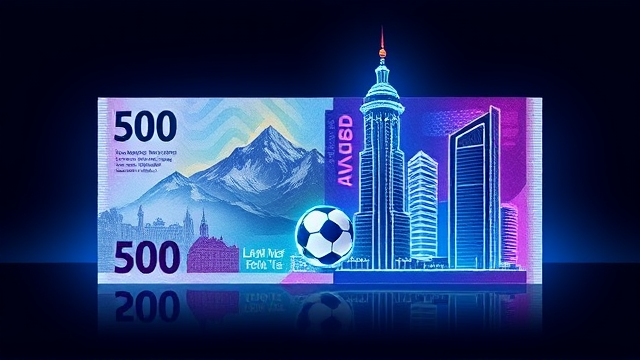Karpin Would Vote for Labuba on 500 Ruble Banknote.
In a move that perfectly encapsulates the delightful unpredictability of modern football culture, Russian national team and Dynamo Moscow manager Valery Karpin has thrown a playful, yet telling, curveball into a national conversation far removed from the pitch. The Central Bank of Russia had initiated a public vote to select the imagery for a new 500-ruble banknote, presenting citizens with a choice between two formidable symbols: the majestic Mount Elbrus, Europe's highest peak representing natural grandeur, and 'Grozny-City,' a striking modern skyscraper complex in Chechnya emblematic of contemporary urban development and regional resurgence.This process, however, was subsequently canceled, leaving the debate in a state of suspended animation. Yet, when posed the straightforward question of which image he preferred, Karpin bypassed the established options with the instinct of a midfielder spotting a killer pass, declaring, 'I would vote for Labuba.' This wasn't a political statement or a geographical endorsement; it was a spontaneous nod to a viral internet sensation—a fluffy, wide-eyed toy creature that has captured the public's imagination, with Karpin himself previously quipping that the plush figure resembled Russian midfielder Dmitri Barinov, a comparison as endearing as it is bizarre. This incident is more than a quirky soundbite; it's a microcosm of how sports figures, particularly those with Karpin's candid and often wry public persona, now operate within a media ecosystem where viral memes and serious policy discussions can collide.His choice of Labuba over national monuments speaks to a shifting cultural landscape where populist, internet-born icons can momentarily rival traditional symbols of state and identity for attention, a phenomenon as analytically fascinating as a perfectly executed set-piece. Just as a manager's tactical substitution can change a game, Karpin's off-the-cuff comment injects a dose of relatable, human-scale whimsy into the often-staid discourse of national symbolism, reminding us that the narratives we build around our heroes and our currency are, ultimately, all about the stories we choose to tell, whether they are carved from stone, built from steel, or stitched from plush fabric.
Latest News
The Tennessee Titans' decision to fire head coach Brian Callahan on Monday, with the team mired at 1-5, was not a sudden shockwave but the inevitable
10 minutes ago0 comments
The beautiful game, so often a theater of dreams, once again finds itself an unwilling stage for the world’s most intractable conflicts as the Italian national
30 minutes ago0 comments
The ice was absolutely electric last night, folks, as the NHL’s regular season continued to deliver the kind of drama we live for.
40 minutes ago0 comments
In the charged atmosphere of a rivalry that divides a state and captiVates a nation, Utah head coach Kyle Whittingham executed a strategic sidestep that spoke
50 minutes ago1 comments
The name Robinho evokes a specific brand of Brazilian footballing magic—the samba rhythm on the ball, the audacious dribbles, the weight of a nation's
1 hour ago0 comments
The UFC's relentless march towards the end of the year delivers another blockbuster with UFC 323, set to electrify the T-Mobile Arena in Las Vegas on the night
1 hour ago1 comments
In a move that perfectly encapsulates the delightful unpredictability of modern football culture, Russian national team and Dynamo Moscow manager Valery Karpin
2 hours ago1 comments
The tectonic plates of European football are set to shift once more, with UEFA and the European Club Association's joint venture, UC3, announcing a seismic
3 hours ago2 comments
It’s quiet here...Start the conversation by leaving the first comment.
